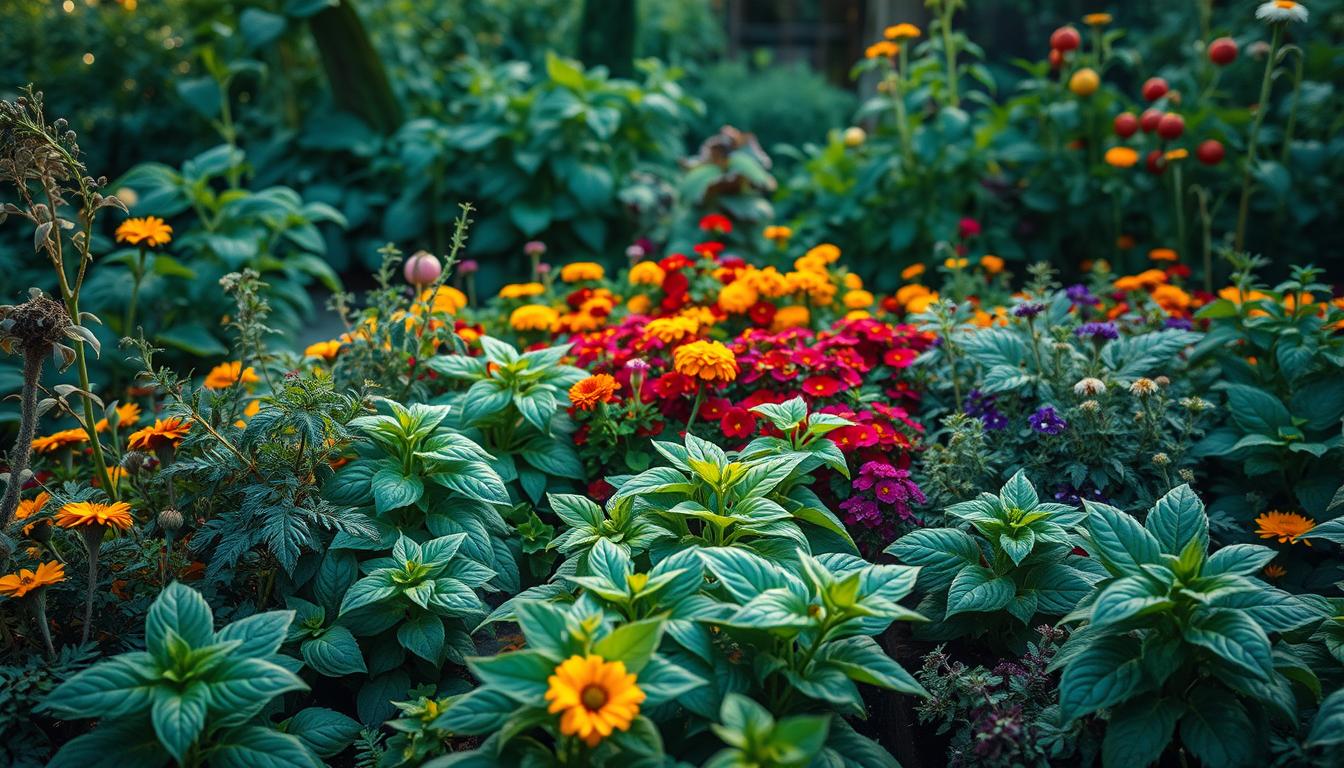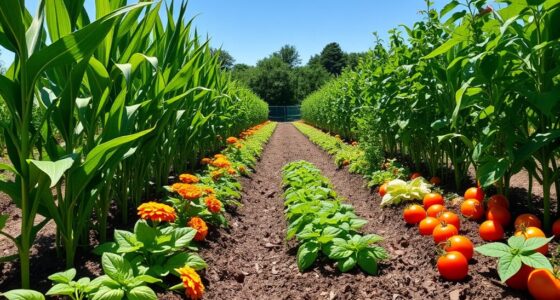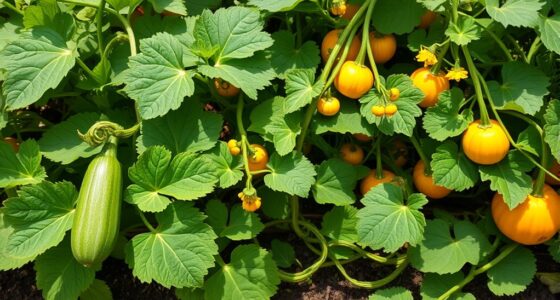Imagine stepping into your garden, a symphony of colors and fragrances surrounding you. Among the vibrant array of greenery, basil stands out—not just for its rich, aromatic leaves but also for its potential to transform your gardening experience. As you nurture your basil plant, have you considered the power of companion planting? By selecting the right basil companion plants, you can elevate not only the health of your garden but also the flavor of your dishes. Embracing these gardening tips can help you create a thriving ecosystem, where beneficial relationships flourish, pests are kept at bay, and your little patch of Earth becomes a haven for growth. Not only is basil easy to grow, yielding its first harvest in about a month, but it also faces challenges with pests. Let’s explore how interplanting with complementary species can enhance your herb gardening adventure and ensure your basil thrives.
Key Takeaways
- Understanding the role of basil companion plants can enhance your garden’s health.
- Interplanting improves pest control and encourages beneficial insects.
- Basil is easy to grow and quickly yields rewarding harvests.
- Strategic planting can lead to improved flavor in your crops.
- Creating a diverse garden ecosystem will boost your overall gardening success.
Understanding Basil as a Garden Herb
Basil is a delightful garden herb known for its aromatic leaves and vibrant flavor. This annual herb thrives in warm conditions and loves full sunlight, requiring about 6 to 8 hours each day. When growing basil, keeping the soil moist is essential for optimal growth. With the right care, you can enjoy a steady supply of this wonderful herb throughout the growing season.
Understanding basil characteristics is crucial for maximizing your garden’s yield. It is worth noting that basil can be susceptible to pests like aphids and whiteflies, which can impact its health and flavor. By incorporating companion plants, you can create a more resilient garden ecosystem that helps deter these pests while promoting healthy growth.
Incorporating basil into your garden not only enhances your culinary experience but also contributes to a flourishing garden environment. Use this aromatic herb to complement your cooking while reaping the benefits of growing basil in your garden.
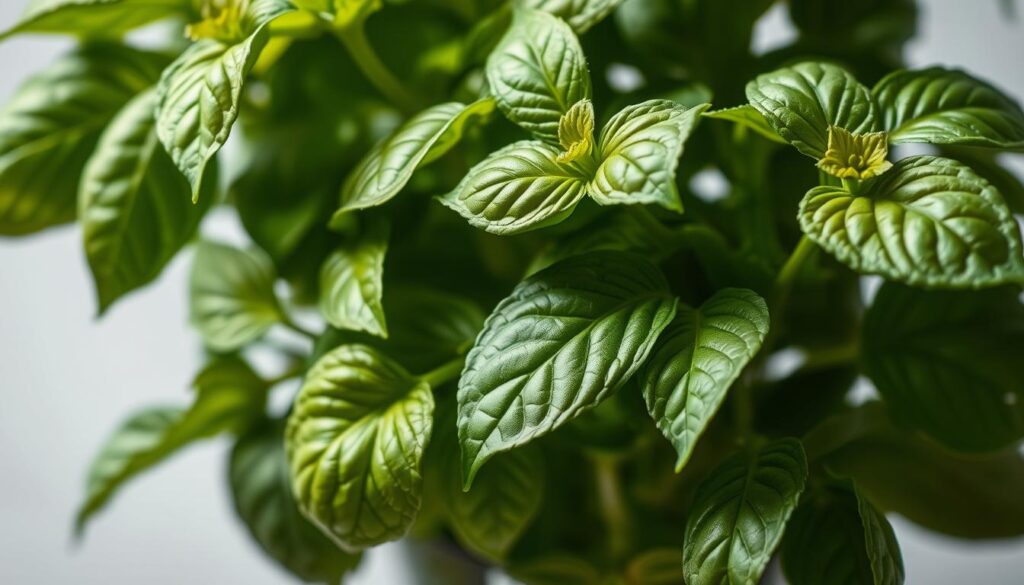
Benefits of Companion Planting with Basil
Embracing the practice of companion planting can yield remarkable benefits for your garden, particularly when using basil. The companion planting advantages of basil extend beyond simple aesthetics. This herb not only enriches the garden but also plays a crucial role in fostering healthy plant combinations.
One of the standout herb gardening benefits of basil is its ability to repel a variety of common pests. Its strong aroma deters insects that often threaten the health of nearby plants. By choosing the right plant combinations, you can create a harmonious garden ecosystem where plants support one another. Basil provides nutrients and shelter to its companions, which can lead to improved overall garden health.
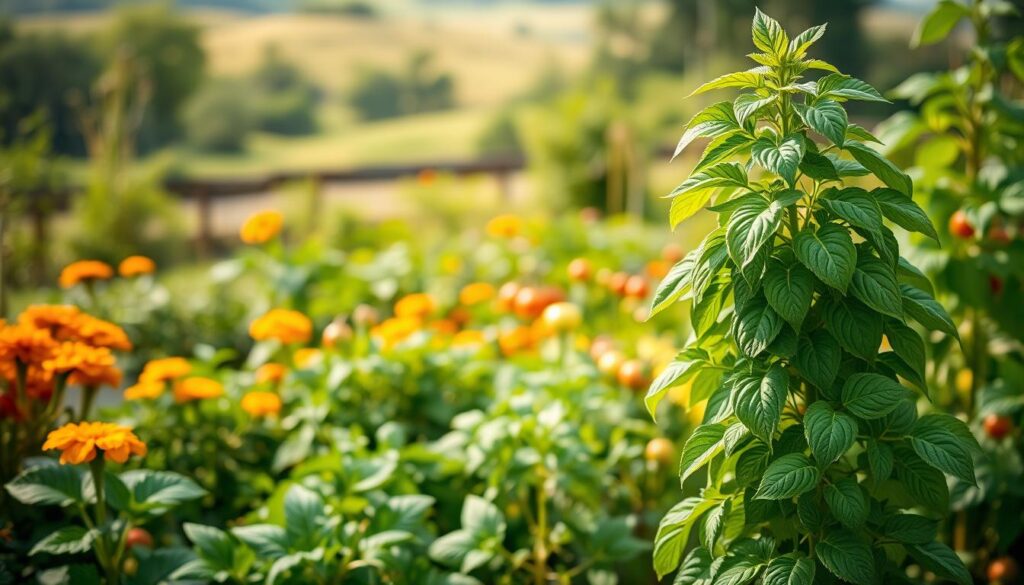
Through effective companion planting, gardeners can achieve more robust and vibrant crops. Basil’s natural properties help ensure that neighboring plants not only survive but thrive, creating a flourishing environment that celebrates biodiversity and enhances productivity.
Basil Companion Plants to Enhance Growth
Selecting the right combination of plants for your garden can create an extraordinary environment where basil thrives. The basil companion plants list includes various options that, when planted together, promote agricultural synergy, resulting in healthier, more productive plants.
For instance, planting basil alongside tomatoes enhances growth by improving the flavor and nutrient profile of both plants. Both benefit from the proximity, with tomatoes providing the perfect shelter for basil against harsh sunlight.
Other beneficial companions include garlic, which acts as a natural pest repellent, and marigolds, known for drawing in pollinators. These plants not only enhance growth but also help maintain a balanced garden ecosystem, preventing infestations and promoting healthy soil.
Here’s a detailed look at some of the best companion plants for basil:
| Companion Plant | Benefits |
|---|---|
| Tomatoes | Improves flavor, enhances growth |
| Garlic | Pest control, strengthens flavor |
| Marigolds | Pollinator attraction, pest deterrence |
| Peppers | Shared nutrients, enhanced growth |
| Chamomile | Enhances flavor and attracts beneficial insects |

Utilizing this basil companion plants list allows you to effectively enhance growth in your garden. Experimenting with different combinations can lead to surprising results and a more bountiful harvest. Embrace the art of companion planting and watch your garden flourish.
Asparagus: A Perfect Partner
Asparagus serves as an excellent companion for basil in your garden. This duo thrives well together, thanks to their compatible growing conditions. Both asparagus and basil flourish in full sun and require similar soil types, including sandy and loamy soils that drain well.
An intriguing aspect of collaborative growing with these plants is their relationship with pests. Asparagus attracts ladybugs, which are beneficial insects that prey on aphids, a common nuisance for basil. When you grow basil alongside asparagus, you not only enhance your yields but also benefit from the natural pest control that arises in this partnership. Furthermore, basil acts as a deterrent to asparagus beetles, protecting both plants from potential harm.
The shared benefits of this pairing extend beyond pest management. Asparagus provides shade that helps shield basil from harsh sunlight, which can sometimes be overwhelming. This mutual support enables both plants to achieve their maximum potential, making your garden more productive.
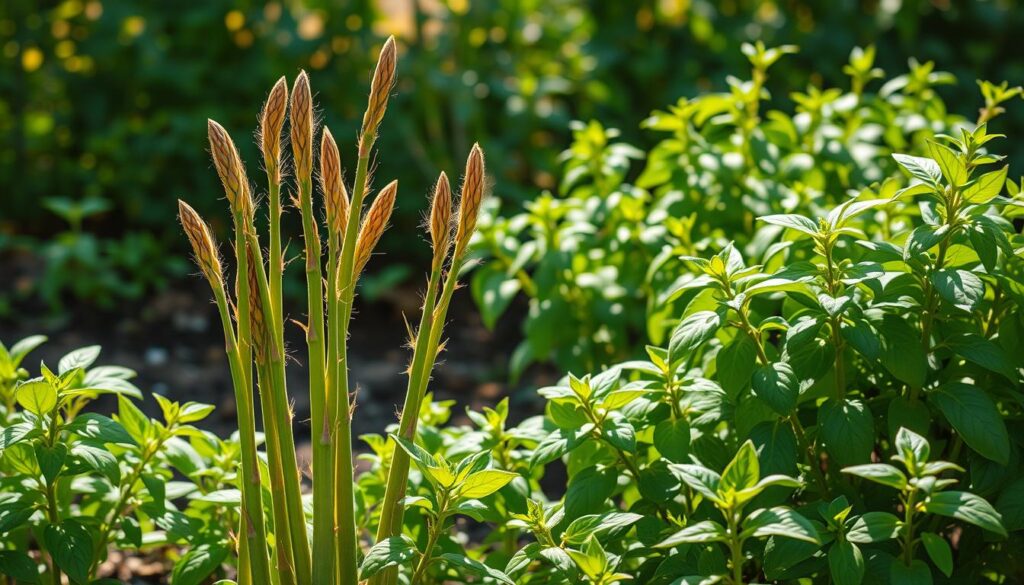
| Plant | Benefits for Partner | Pest Control Advantage |
|---|---|---|
| Asparagus | Provides shade for basil | Attracts ladybugs that control aphids |
| Basil | Deters asparagus beetles | Offers aromatic oils that repel pests |
Marigolds: Your Garden’s Pest Repeller
Including marigolds in your garden offers a wealth of marigolds benefits. These vibrant flowers not only brighten up your outdoor space but also serve as effective pest repellent plants. Their unique scent deters numerous harmful pests, including nematodes and various insects that pose a threat to your basil plants.
Planting marigolds alongside basil enhances its growth and overall health by maintaining a pest-free environment. Additionally, marigolds attract beneficial insects such as ladybugs and parasitic wasps, which naturally keep pest populations in check.
Here’s a quick overview of the key benefits of marigolds as gardening companions:
| Benefit | Description |
|---|---|
| Pest Deterrent | Repels unwanted insects that can harm basil and other plants. |
| Pest Predator Attraction | Draws in natural predators like ladybugs that help control pest populations. |
| Soil Health | Improves soil quality and health, benefiting neighboring plants. |
| Aesthetic Appeal | Adds vibrant color and beauty to your garden. |
Incorporating marigolds as part of your gardening strategy not only beautifies your garden but also enhances the well-being of your beloved basil. Make marigolds a staple in your garden to enjoy the full spectrum of their marigolds benefits while creating a thriving ecosystem of gardening companions.
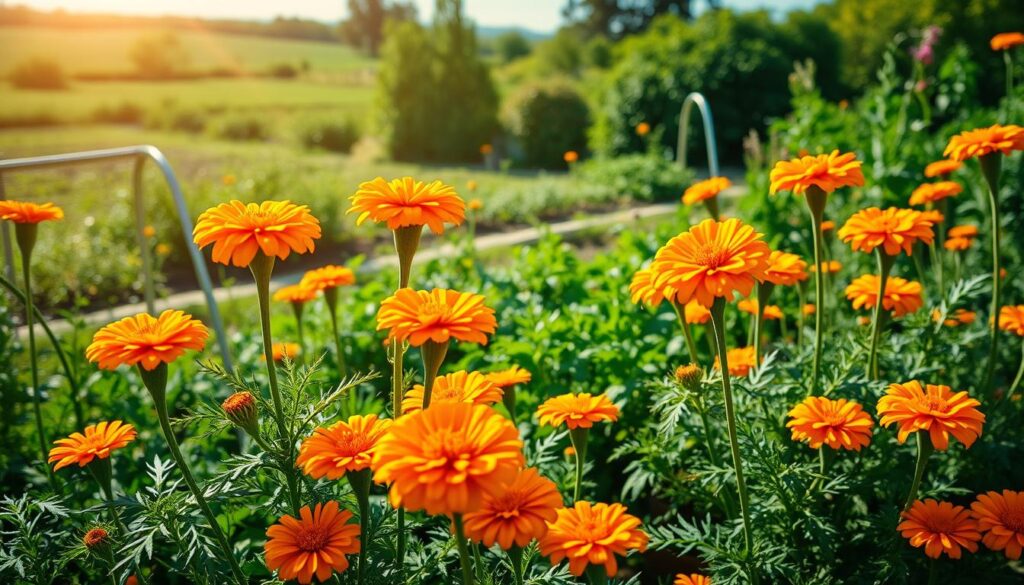
Tomatoes: A Classic Pairing
The combination of tomato and basil stands out as one of the most celebrated examples of classic companion plants in culinary gardening. Not only do these herbs thrive alongside each other, but their union enhances the flavor profiles of many beloved dishes.
Planting tomatoes in proximity to basil creates a mutually beneficial environment. The aromatic qualities of basil help improve the flavor of tomatoes, making them even more delightful in salads, sauces, and various recipes. These two plants share similar needs; they both flourish in warm, sunny conditions and require consistent moisture.
Additionally, basil acts as a natural pest deterrent for tomatoes. It helps protect these fruits from troublesome pests such as tomato hornworms, allowing you to cultivate a healthier garden naturally. Including both tomato and basil in your gardening plans can elevate not only the aesthetics of your garden but the quality of your harvest.
Consider growing them together for an enhanced culinary experience. Whether you’re whipping up a fresh pesto or making a classic marinara sauce, the collaboration between tomato and basil will shine through in every delicious bite.
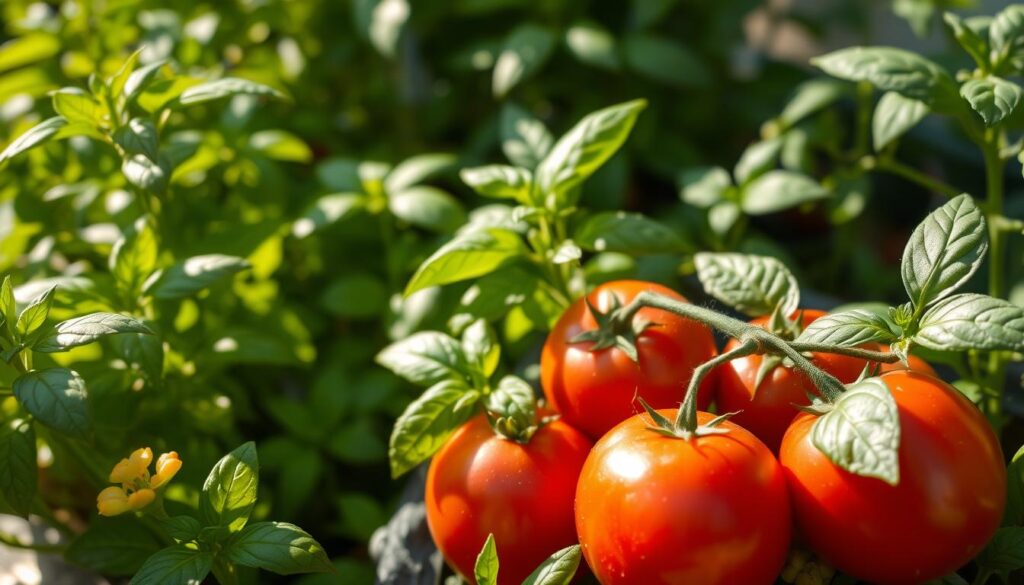
Peppers: Beneficial Neighbors
When it comes to growing a thriving garden, the combination of peppers and basil proves to be a winning strategy. Both plants flourish in similar climates and share care requirements, making them beneficial garden companions. Planting them together not only maximizes your space but also enhances the health and yield of each species.
Basil plays a crucial role in attracting pollinators, which in turn can lead to increased yields for your pepper plants. The extra buzz around your garden will encourage more activity, boosting the chances of fruitful produce. Moreover, basil’s ability to manage moisture creates a humid microclimate that peppers enjoy, promoting their growth in a supportive environment.

On the flip side, the taller pepper plants provide shade for basil, which can protect it from excessive sun exposure, especially during the peak of summer. This creates a synergistic planting arrangement that benefits both plants, leading to enhanced overall growth and health in your garden. By cultivating peppers alongside basil, you can enjoy the rewards of a more productive, vibrant garden.
Chamomile: Enhancing Flavor and Attracting Pollinators
Chamomile, with its delicate blossoms, offers impressive rewards for your garden beyond its renowned tea benefits. When grown alongside basil, it enhances flavor through natural interactions that enrich the basil’s essential oils. This flavor enhancement not only makes your dishes more aromatic but also infuses your garden with delightful scents.
Beyond improving taste, chamomile plays a crucial role in pollinator attraction. Its flowers draw beneficial insects, including hoverflies and wasps, known for preying on pesky basil pests. Incorporating chamomile into your basil patch encourages a healthier ecosystem and creates a balanced environment for both plants.
Utilizing these chamomile benefits in your garden can elevate your gardening experience, making it a harmonious space where plants thrive and biodiversity flourishes.

Carrots: Protecting Root Vegetables
In the garden, pairing carrots and basil creates a symbiotic relationship beneficial to both plants. Carrots thrive when planted alongside this aromatic herb, which offers natural pest protection against common adversaries such as carrot flies. These pests can cause significant damage to the roots if left unchecked.
As root vegetable companions, carrots and basil do not compete for nutrients. Carrots grow deep in the soil while basil flourishes above, ensuring that both can access the necessary resources without conflict. This arrangement promotes healthier growth, leading to a robust harvest.
When it comes to managing pests, the scent of basil acts as a deterrent. Many insects find the aroma unappealing, which significantly lowers the chances of infestations. By incorporating basil into your carrot patch, you’re not only enhancing your garden’s biodiversity but also investing in a more productive space.
| Plant | Benefit | Pest Protection |
|---|---|---|
| Carrots | Thrives with minimal nutrient competition | Repels carrot flies |
| Basil | Promotes growth above ground | Deters various pests |
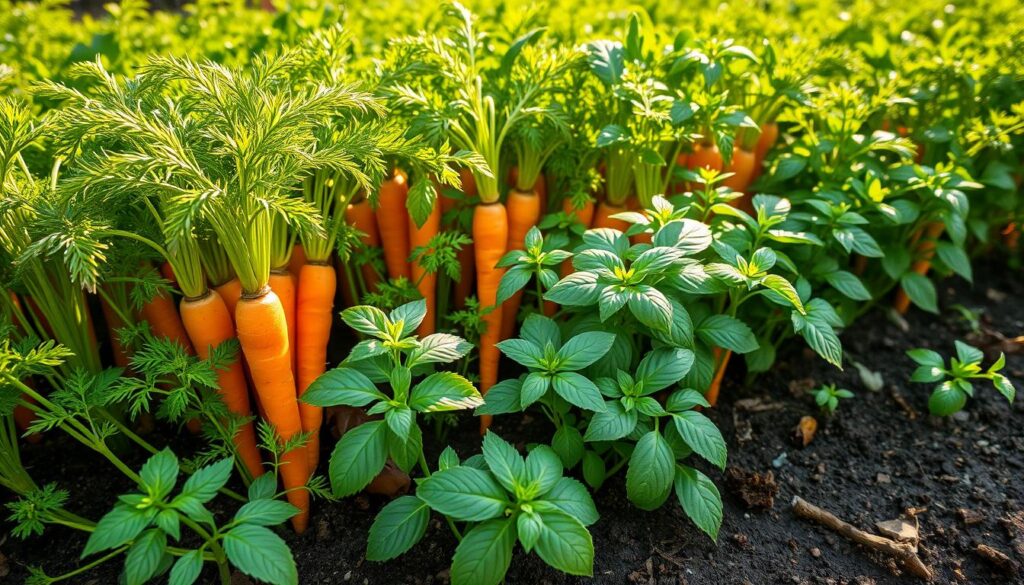
Garlic: Strengthening Each Other’s Flavor
When you consider gardening, the garlic and basil pairing stands out as one of the most harmonious combinations. This duo not only offers an explosion of taste but also contributes significantly to flavor enhancement in various dishes. Garlic’s robust aroma complements basil’s fresh, herbal notes, creating a delightful experience for your palate.
On top of enhancing the flavor profile, the combination serves as an effective pest deterrent. Garlic possesses natural qualities that repel many garden pests, including small mammals and insects. By planting garlic alongside basil, you create a thriving, chemical-free environment for your herbs and vegetables.
Taking advantage of this partnership promotes a healthier garden. You will notice fewer pests targeting your basil, allowing it to grow abundantly while enjoying the benefits of improved taste in your culinary creations.
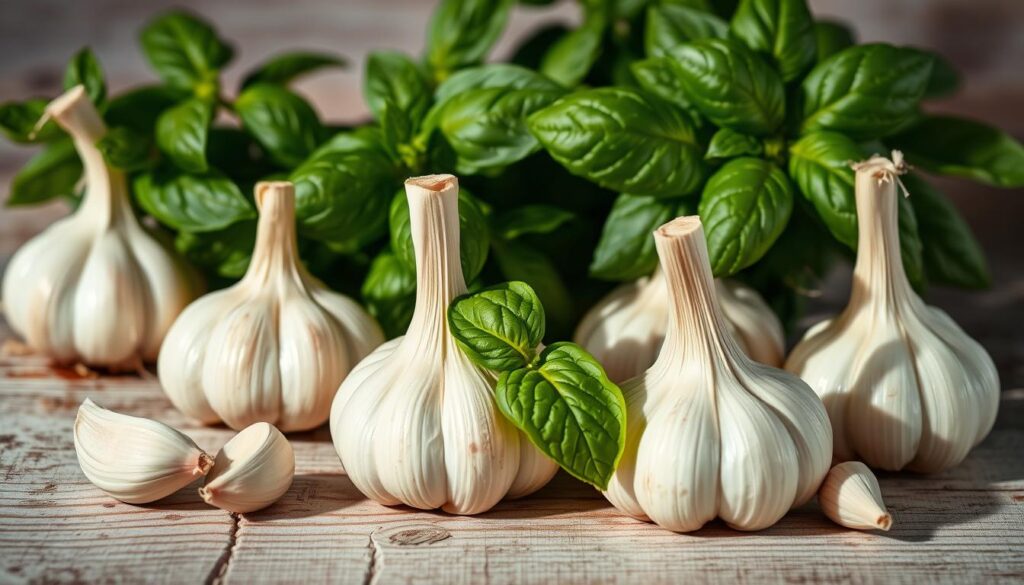
Basil Companion Plants: Elevating Flavor and Health
In the realm of healthy gardening, understanding the right companion plants for basil can lead to remarkable results. These plants not only support the growth of basil but also contribute significantly to flavor enhancement. Incorporating specific herbs and vegetables around your basil can create an ideal microclimate, allowing it to thrive while enhancing the overall taste of your garden produce.
For instance, basil pairs excellently with plants like tomatoes and peppers. This symbiotic relationship promotes robust growth and enriches the flavor profile of both plants. Basil’s aromatic leaves can deter pests that might otherwise target your tomatoes, allowing for a healthier and more bountiful harvest. Similarly, planting basil alongside peppers encourages a more vibrant taste in your peppers, benefiting dishes that call for both ingredients.
It’s essential to consider the various benefits associated with companion planting. Not only can you protect your basil from common pests, but you can also optimize conditions that support flavor enhancement. The right mix of plants creates a beneficial ecosystem, paving the way for stunning flavors and healthier yields.
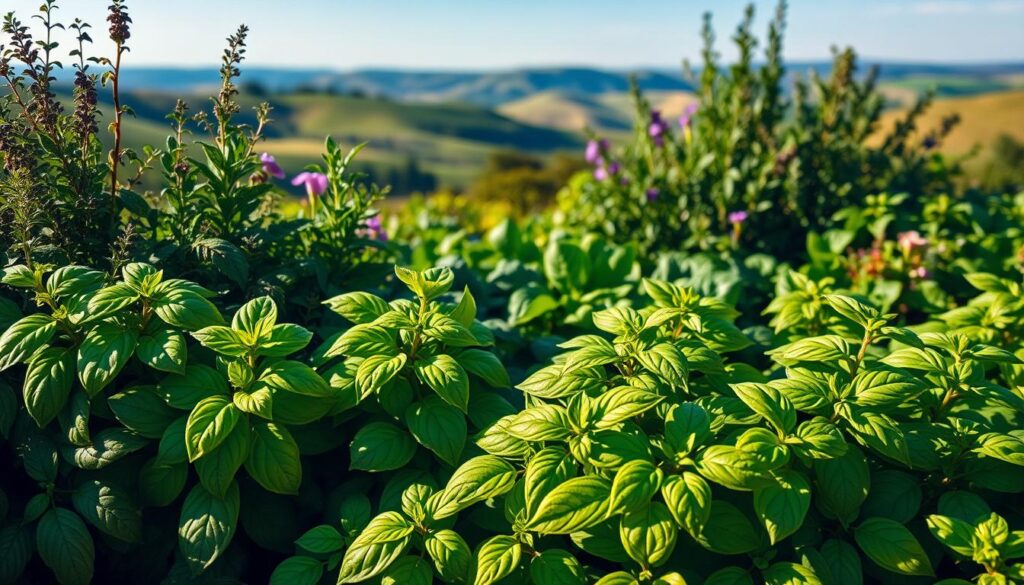
Lettuce: Safeguarding from Aphids
Planting a lettuce and basil mix can significantly enhance your garden health. By incorporating basil alongside your lettuce, you create an environment that naturally deters aphids, known for their propensity to feast on lettuce leaves. Basil’s aromatic properties attract beneficial insects that actively prey on aphids, helping to keep their populations in check.
This dynamic duo fosters a healthier growth environment for your lettuce, ensuring it remains vigorous and less susceptible to pest infestations. Embracing this approach offers an organic method of aphid control while promoting a thriving garden.
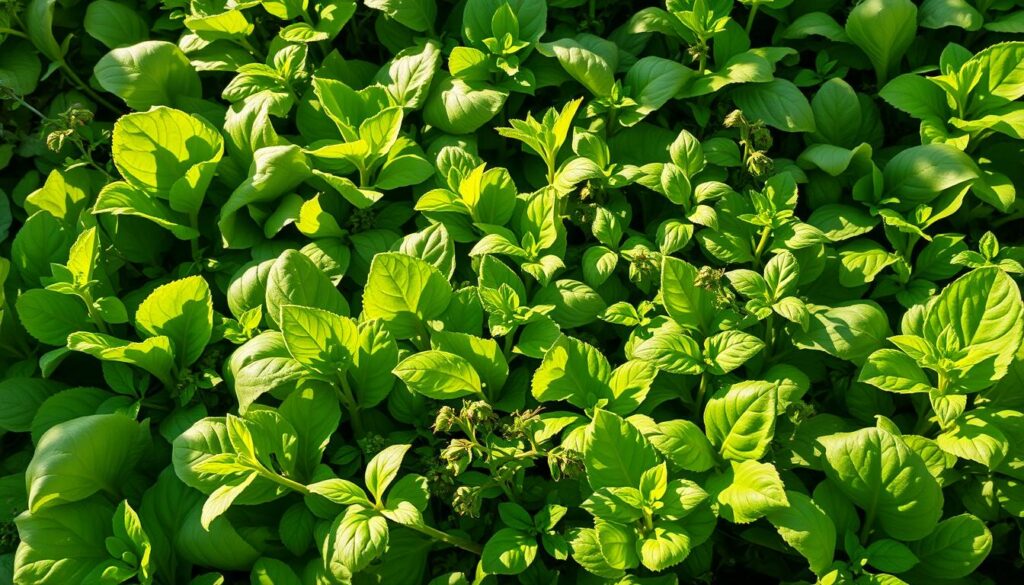
Eggplant: A Mutual Benefit
Eggplant and basil form a dynamic duo in companion gardening. Both thrive in similar warm conditions, making their cultivation together an optimal choice. The delightful aroma of basil not only enhances your garden’s fragrance but also acts as a natural pest deterrent, particularly against common threats like the tomato hornworm, which can devastate eggplants.
This partnership fosters healthier plants by promoting better growth and resilience. The presence of basil encourages a more robust eggplant harvest, as their growing habits complement each other beautifully. By including eggplant and basil in your garden, you can enjoy a symbiotic relationship that benefits both crops.
Consider these key benefits:
- Reduced pest pressure for eggplants due to basil’s protective qualities.
- Enhanced growth potential for both plants when grown in proximity.
- A flavorful addition to your dishes, as both eggplant and basil are key ingredients in Mediterranean cuisine.
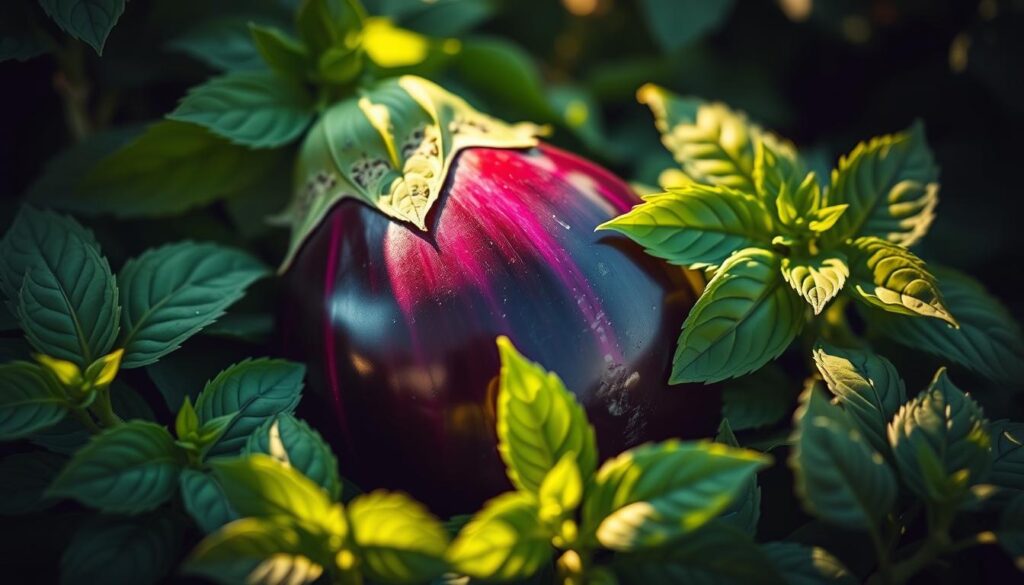
| Feature | Eggplant | Basil |
|---|---|---|
| Ideal Growing Temperature | 70°F – 85°F | 70°F – 90°F |
| Pest Resistance | Vulnerable to certain pests | Deters pests like tomato hornworm |
| Culinary Use | Used in various dishes | Adds flavor to many recipes |
Incorporating eggplant and basil into your garden not only adds visual appeal but also promotes a thriving ecosystem of healthy plants. With the right care and attention, this companion gardening technique can yield delicious results for your culinary creations.
Roots and Tubers: Turnips and Potatoes
Combining turnips and potatoes with basil in your garden can yield remarkable results. These root crops benefit immensely from the practice of root crop companion planting. The strong aroma of basil helps to mask the scent of turnip greens, effectively confusing insect pests that typically target your crop. This natural pest management technique enables healthier growth for turnips and potatoes.
Basil’s repellent properties extend beyond turnips, offering protection to potatoes as well. By deterring notorious pests such as the potato beetle, basil contributes to healthier tuber development. As a result, you can expect larger and more robust yields, enhancing the overall gardening experience.
| Crop | Benefits of Companion Planting with Basil | Pest Management |
|---|---|---|
| Turnips | Disguises greens from pests | Reduces insect damage |
| Potatoes | Supports healthy tuber growth | Dissuades potato beetles |
Utilizing root crop companion planting not only boosts your harvest reliability but also enriches the ecosystem of your garden. Embracing this strategy will help you grow a thriving garden where turnips and potatoes achieve their fullest potential alongside basil.
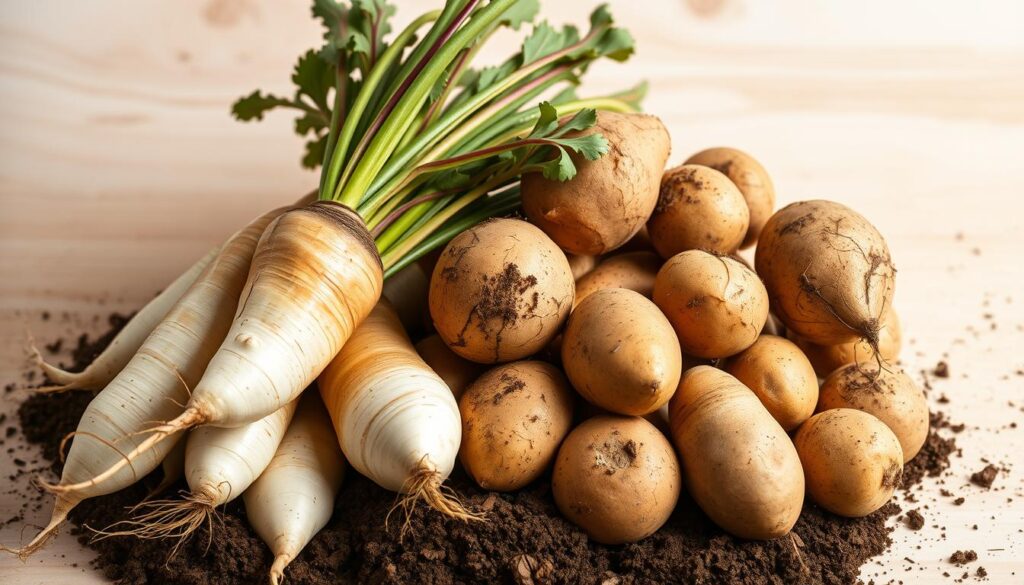
Conclusion
As you reflect on the summary of basil companion plants, it becomes clear that selecting the right companions can significantly contribute to your gardening success. The partnerships between basil and other plants enhance growth, repel pests, and create a vibrant ecosystem conducive to development. Those relationships discussed throughout this article offer practical insights into how you can improve not just your basil yield but also the overall health of your garden.
Incorporating these companion plants will provide an array of benefits, ultimately leading to an enhanced yield. Whether it’s through pest repulsion or flavor enhancement, every choice you make in selecting your garden neighbors can lead to a more productive and enjoyable growing experience. This holistic approach to gardening not only satisfies your culinary needs but also nurtures a balanced ecosystem that thrives in your yard.
So take the insights from this guide and watch your gardening journey blossom. With a little planning and the wisdom of companion planting, you can turn your garden into a flourishing paradise where basil and its companions coexist harmoniously, paving the way for a bountiful harvest.
